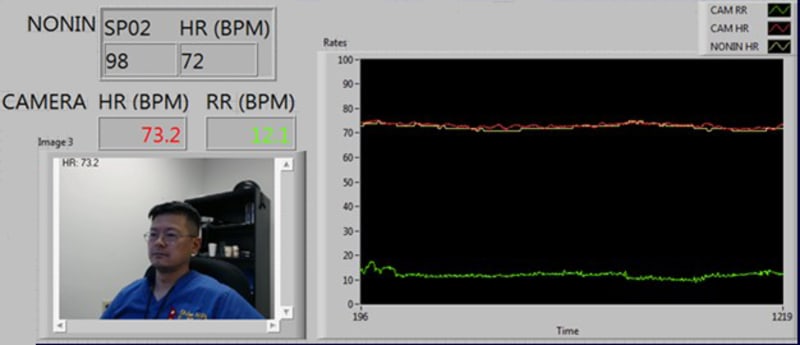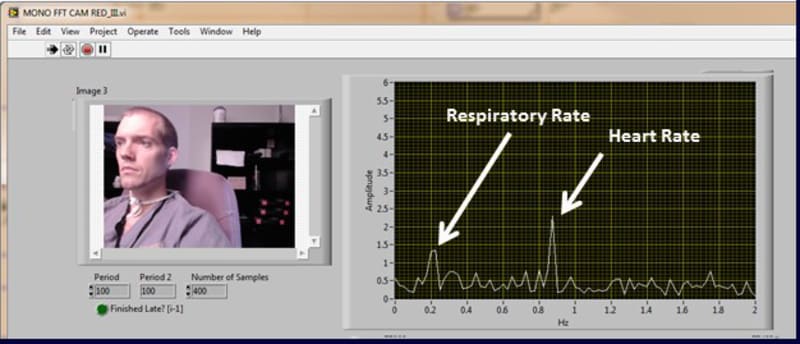Approximately 11% of the global burden of disease can be addressed with surgery. However, due to lack of necessary equipment, many cases go undone and those that are done are compromised by lack of adequate monitoring. Furthermore, a low cost, ubiquitous monitoring can also help identify at-risk patients before their condition becomes intractable, and possibly save many lives before they even get to a hospital not just in the United States, but all over the world.
We intend to build a non-contact patient monitor based on a webcam that can detect heart rate, respiratory rate, and arterial blood oxygen saturation without patient contact, which will be a transformative advance in this setting as it requires no disposable supplies. This system will also help curb cross-patient contamination by eliminating the reuse of disposable supplies.
The proposed device can also address Sudden Infant Death Syndrome which kills 4,500 infants annually in the United States and is the leading cause of death among infants aged 1–12 months in the U.S. [http://www.cdc.gov/sids/]. The American Academy of Pediatrics does not currently recommend continuous audio or video monitoring of infants at risk for SIDS and there is no evidence that such monitoring is helpful. However, if the video can track vital signs such as this proposed device, it can profoundly affect the health of communities everywhere.
The modern pulse oximeter was developed in the 1980s and while its initial use was primarily in patients undergoing general anesthesia, it has expanded beyond the operating room and is now commonly used to measure the oxygen saturation of hospitalized patients. Pulse oximeters shine red and infrared light into the body (e.g. the finger) – by comparing the absorbance of red and infrared light, the pulse oximeter measures the “redness” of pulsatile, arterial blood, and can detect when oxygen levels are low. Pulse oximeters are not commonly used outside the hospital setting. This present project aims to change that, and put the capability of health monitoring into everyone’s hands, at a material cost and ease of use that compares with other consumer electronics.
Like this entry?
-
About the Entrant
- Name:Keita Ikeda
- Type of entry:teamTeam members:Robert H Thiele, M.D.
Keita Ikeda, Ph.D. - Patent status:pending








